Industrial Internet of Things (IIoT) is changing inventory management for the better.
Until very recently, inventory management simply involved employing a level sensor with a 4-20 mA output to relay a distance measurement to a PLC in a control room. This approach involved a lot of wiring whilst not providing very much data.
Inventory management software began to emerge around ten years ago, offering an alternative to the traditional HMI or PLC.
Vendor Managed Inventory with BinMaster
Video Credit: BinMaster
The advent of this technology led to software being installed on local area networks (generally by internal IT departments or external contractors), while graphical interfaces became commonplace, providing additional data and automated alerts. Multiple silo or site management options also began to emerge.
Technology has exploded in recent years, resulting in a rapid transition to the Industrial Internet of Things. More and more, sensors utilized protocols such as HART and Modbus while software evolved from a floppy disc into a virtual cloud, employing Software as a Service (Saas) to manage applications.
Wireless networks also became more reliable, leading to cell phones and tablets replacing the conventional working environment of a desk and chair in an office.
These factors have helped prompt a revolution in inventory monitoring, whether this is on-site, managed remotely, or across any number of sites and silos.
Simplifying Sensor Programming
Setting up sensors was historically a long, often tedious process requiring a significant amount of staff input on top of other tasks, such as setting up a silo or ensuring that parameters in the control room were correct.
In the past ten years, however, sensors have been integrated into web applications and software programs, with some sensors now offering simple setup via a Bluetooth app downloaded to a tablet or cell phone. A USB Bluetooth adapter can also be used for setup on a PC.
An app is available which allows the viewing of level measurements as well as enabling any changes to bin parameters to be completed remotely, up to 80 feet from the sensor itself.
Level monitoring and parameter adjustments can now be performed from the base of the vessel with no need to physically climb ladders, making this task safer and quicker.
Using an app offers many other advantages. Apps are easy to use and smartphones are so common in peoples’ day to day lives that using an app to set up sensors will feel natural and straightforward. The apps in question can be downloaded to an Android or Apple device via their respective app stores.
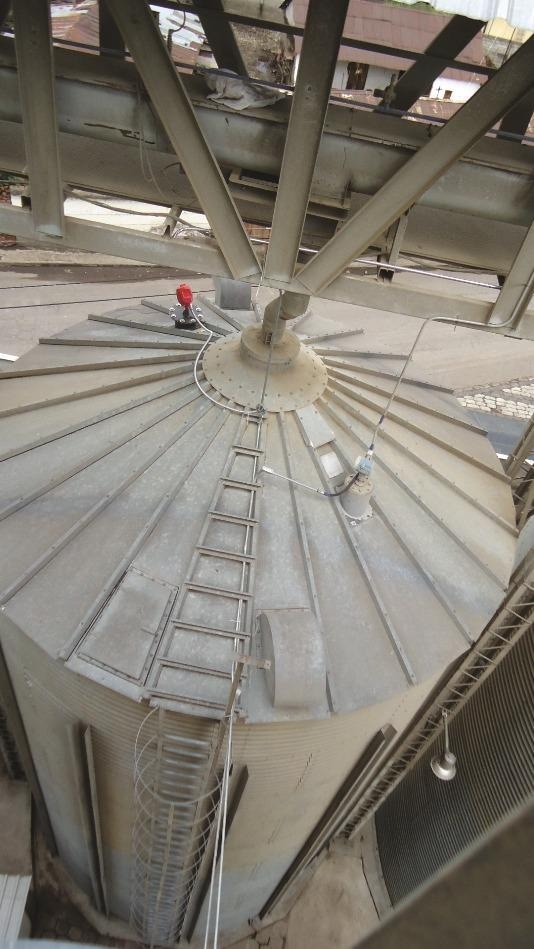
Automation has virtually done away with climbing large silos. Image Credit: BinMaster
Data from individual sensors is accessible via the app in real-time and is stored securely. Should changes to vessel parameters be required, this information can be rapidly updated in the app and will be effective immediately.
Employee safety is enhanced because setup can be performed with no need to climb silos or work in hazardous locations.
Parameters can be duplicated when setting up identical vessels, not only saving vital staff hours but also reducing the risk of errors resulting from manual data entry. Bluetooth technology is also suitable for advanced diagnostics, enabling troubleshooting or monitoring maintenance parameters via the app.
IIoT protocols ensure security through the use of advanced encryption and user access controls, only allowing designated individuals to change key settings. It is also possible to transfer settings to a PC, should additional integration into a plant’s PLC systems be required.
Counting with Non-Contact Sensors
Non-contact technology had a number of issues a decade ago, particularly when used in the dusty conditions commonplace at many bulk solids processing plants.
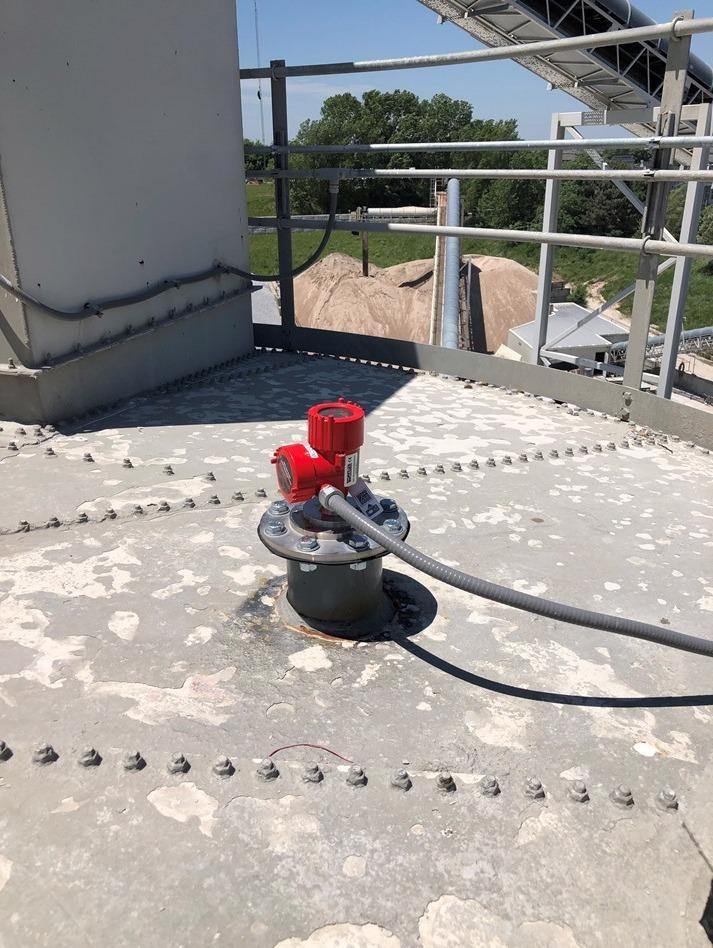
Non-contact radar level sensors measure accurately in high dust environments. Image Credit: BinMaster
Early versions of radar level sensors were found to be erratic and unreliable when used in silos with high dust levels because they were not powerful enough to effectively transmit through the dense suspended particulate.
Radars were developed that utilized horns to focus the beam, but these horns would become packed or coated with dust build up, often requiring an air purge or manual cleaning.
There was a high degree of skepticism towards level data output by these sensors and because remote monitoring was not considered to be reliable, staff continued to climb silos in order to validate measurements.
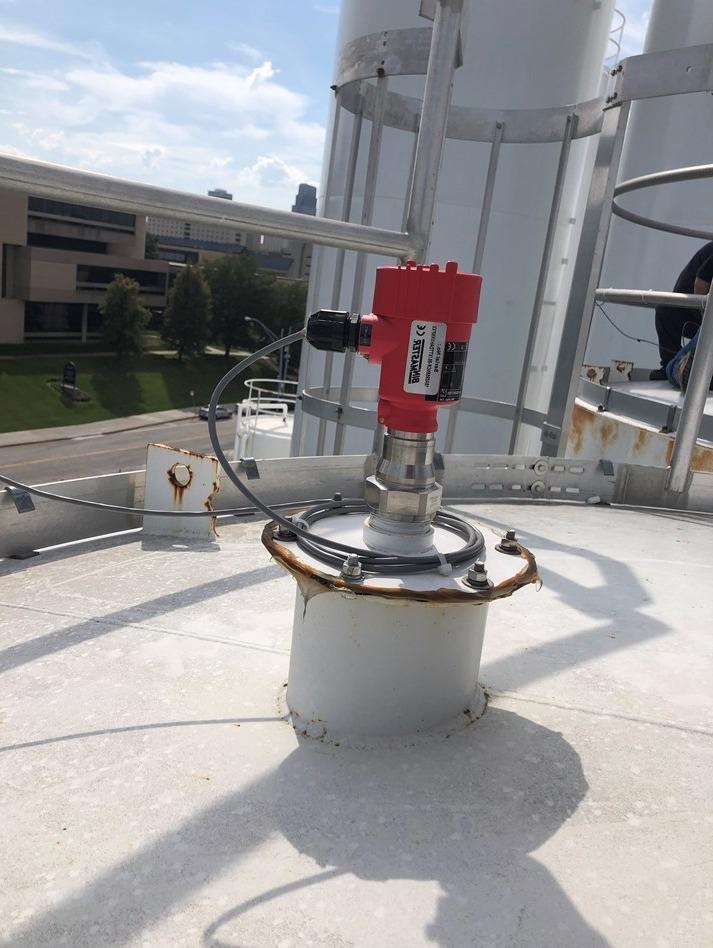
Non-contact 80 GHz radar is accurate in dust. Image Credit: BinMaster
The development of 80 GHz radar technology led to vast improvements in non-contact radar’s performance in silos with excessive dust. By utilizing a focused narrow beam, the radar is able to target a very precise location in the silo, transcending dust, avoiding structure and pinpointing the most appropriate measurement location.
Measurements can be updated in under one second, offering an accuracy of 0.2 inches. This speed and precision allows contemporary sensors to track the filling and emptying cycles of processing silos.
Data is reliable and real-time, meaning that materials management is far easier for purchasing personnel. Inventory valuation for financial reporting is also highly accurate, thus reducing any need for write-offs in forthcoming accounting periods.
Monitor Inventory on a Phone, Tablet, or PC
Many large processing plants operate with only limited numbers of staff. When silo inventory management is remotely available at any time, plants can maintain the required level of efficiency even with limited workers on hand.
Simply logging into a website via an app or Software as a Service program provides real-time data to the right people, allowing them to make effective, timely decisions.
Other benefits of monitoring silo levels on-site or remotely include improved processing efficiency, ordering and delivery scheduling, the elimination of material shortages and reductions in carrying costs. Automated alerts via e-mail or text are available also available, helping to enable a more proactive approach to materials management.
Vendor Engagement in Managing Inventory
Effectively managing inventory is challenging, regardless of whether this is done remotely or at the plant. In the worst-case scenario, silos may become empty, orders may not be placed, or other shortages of critical materials may occur.
These problems are only worsened by inaccurate inventory reports, cumbersome spreadsheets and last-minute deliveries.
Most of these challenges can be averted by enabling vendors to help in delivery schedule optimization, thus ensuring plants have the appropriate amount of material in stock at any given time.
Vendor Managed Inventory (VMI) is a means of directly connecting a plant and its suppliers. With VMI, level sensors on silos are connected using wireless communications and gateways to a website, tracking inventory in real time.
Vendors are provided with viewing rights and login credentials, allowing them to monitor inventory alongside the plant’s staff.
A VMI system is fully automated, ensuring that inventory levels are continuously maintained in real time. The plant and its vendors are sharing the same data, allowing vendors to share the responsibility of monitoring material on hand.
Using this approach, vendors can take a more proactive role in scheduling their production to meet the plant’s demand, placing orders and arranging deliveries prior to any potential work stoppages occurring. A key advantage of this approach is that through proper validation, an entire shipment will fit into the silos, removing any risk of overfilling.
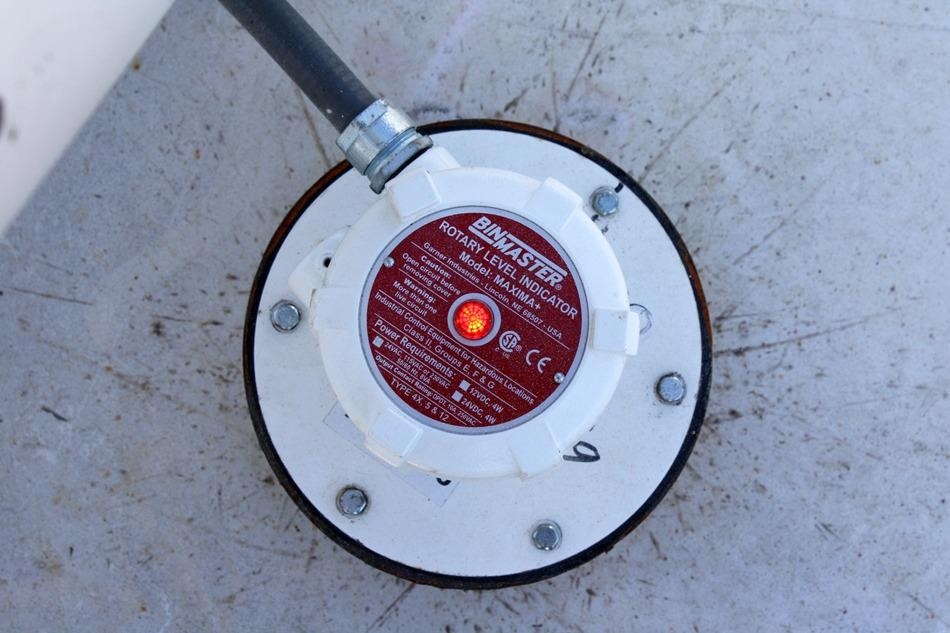
Sensors alert to full status to prevent overfilling silos. Image Credit: BinMaster
The shared software can be set up to send automated alerts via e-mail or text at pre-defined trigger levels, ensuring that silos do not run empty. Historical trending is available, providing useful data on usage and deliveries and generating reports to help in demand forecasting.
Overall, using VMI to remotely connect plants and vendors is an effective remote strategy that yields notable improvements in supply chain management.
This approach to inventory management can help reduce the need for safety stock, increase inventory turns, cut lead times, improve cash flow and raise profitability. This approach will also lead to a reduction in time-consuming e-mails, phone calls and meetings.
SaaS on a Website Helps Protect Profitability
Working remotely does not have to leave plant managers feeling disconnected from their inventory. When inventory is monitored remotely using a SaaS program on a website, this can be accessed using a tablet, phone or PC via an internet connection with real-time monitoring and alerts available at all times.
Many software programs are specifically optimized for both mobile and desktop viewing.
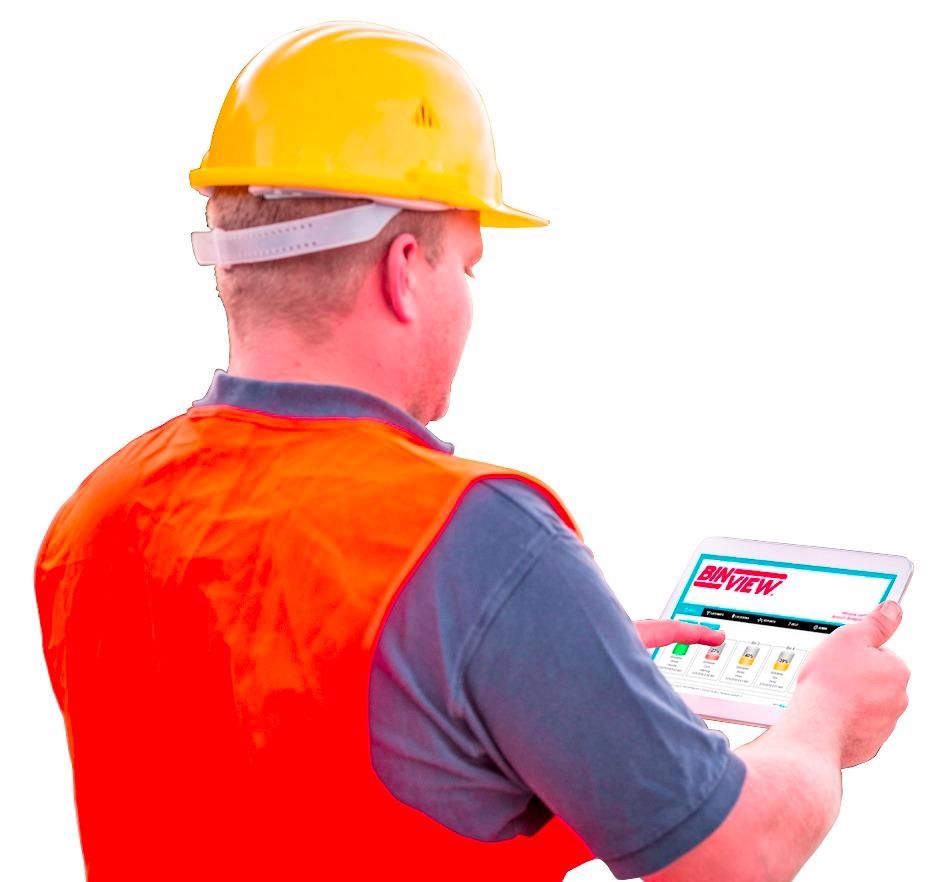
Software makes real-time inventory data available on a mobile device. Image Credit: BinMaster
SaaS has convenience and ease of use at its core, but plants using SaaS will realize many other benefits. Inventory management programs are designed to be used out-of-the-box, meaning there is often no need to have an IT specialist on site.
Software development is complete, the program is ready for use and the software host will manage upgrades and help to train staff. Additionally, inventory management platforms via SaaS are fully scalable, making them ideal for a single silo through to hundreds of silos at a single location or many locations.
Web-based applications are particularly useful when centralized monitoring is required for multiple plant locations, for example, in circumstances where dispatchers need real-time inventory oversight of multiple plants to appropriately schedule and route trucks.
Centralized monitoring helps improve logistics between plants while simultaneously optimizing routing and ensures that every location benefits from efficient running with no risk of material outages.
Drivers, dispatchers and plant managers are able to set priorities, therefore reducing out-of-stocks and avoiding delivery emergencies - all issues which can negatively impact production schedules and reduce profits.
A New Reality in Remote Monitoring
The sensor is at the core of every remote monitoring system. Continuous level sensors are fitted to each silo, ensuring that appropriate sensor technology is used to accurately measure the specific type of powdered material or solid. These technologies include non-contact radar, guided wave radar, lasers, ultrasonics, weight and cable, or 3D scanners.
When a new measurement is obtained, data from the sensors is passed to a wireless gateway. Gateways are available that can accommodate between four and twenty digital inputs across multiple protocols, updating in between two and five seconds.
The gateway sends the measurement data to software in the Cloud. This is done practically instantaneously and up-to-date silo inventory can be accessed from a tablet, phone, or PC via the device’s internet connection.
Access is straightforward, usually involving accessing a secure website with unique login credentials before viewing the required information on an easy-to-use dashboard.
Bin parameters, such as height, diameter, material and location, can be set using an intuitive interface, thus allowing for easy identification. A graphical interface shows inventory levels for each individual bin, allowing high- and low-level alerts to be set, which automatically send an e-mail or text when bins are almost full or empty.
Software can facilitate the viewing of silos at a single location or across multiple sites and bins may be sorted by alert status or material.
Historical reports are highly beneficial in helping plant staff better understand trends or when looking to forecast future material needs. Financial and purchasing teams are able to specifically access the data required for ordering and accounting purposes.
Working with the software in real-time ensures that all relevant staff, vendors and stakeholders are viewing the most recent data, helping plants keep on top of any production and supply chain requirements.
Wireless Innovations Lead to Cost-Effectiveness
A decade ago, it was not unusual for the cost of electricians, wiring and other installation costs to be more than twice the cost of the inventory management system itself. Expensive wiring has historically been a barrier to establishing a connected plant, resulting in personnel being disconnected from their inventory.
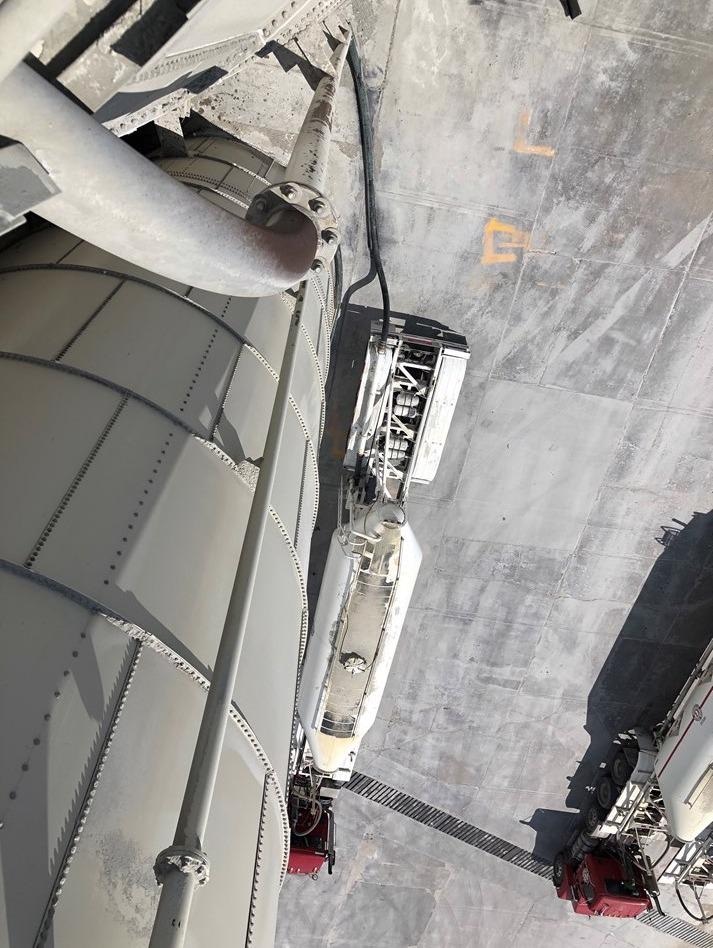
Delivery schedules are improved using an automated inventory management system. Image Credit: BinMaster
It is impractical and often unfeasible to run long spans of wire outdoors, but the advent of wireless devices has provided the missing link between sensors and the software that connects workers with data, allowing them to do their jobs more effectively. Wireless gateways, modems, transceivers and repeaters have significantly reduced the wiring requirements, complexity and cost of installation.
Long range (LoRa) antennas can facilitate data transmission of up to a mile line of sight, therefore removing any need to run long spans of wire and making installation straightforward, even for large, spread out plants.
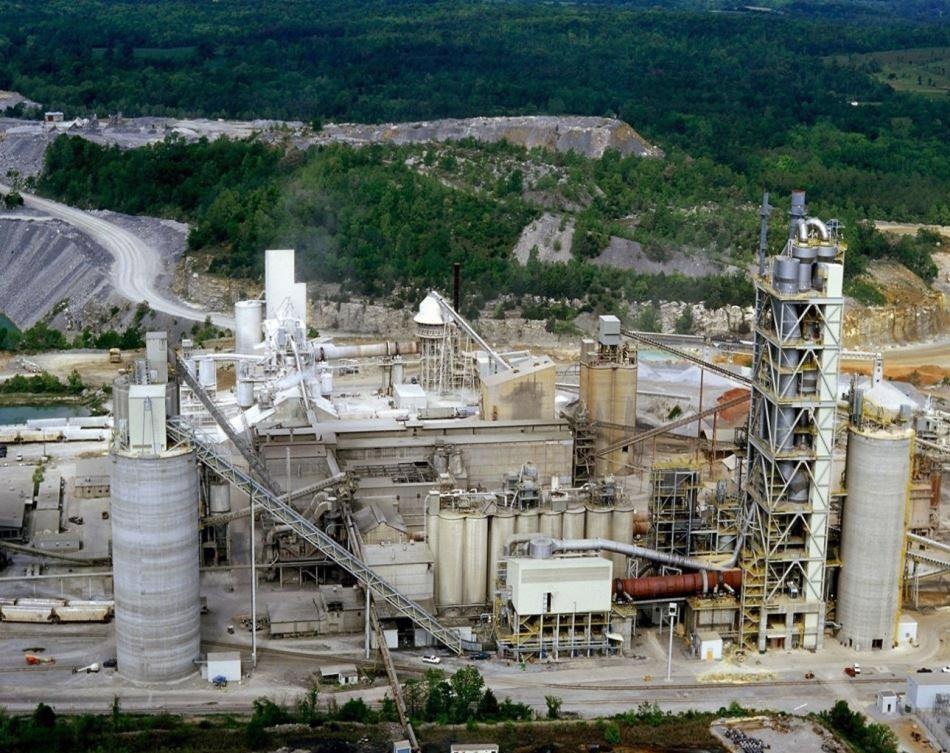
This large cement plant benefits from wireless technology and an automated inventory system. Image Credit: BinMaster
Gateways facilitate the flow of data from sensors with no need for extensive wiring. A gateway will combine the functions of a modem, wireless access point and a router in a single, convenient device, utilizing Wi-Fi, ethernet, or cellular connectivity to transfer data to software, a PLC, or a web application.
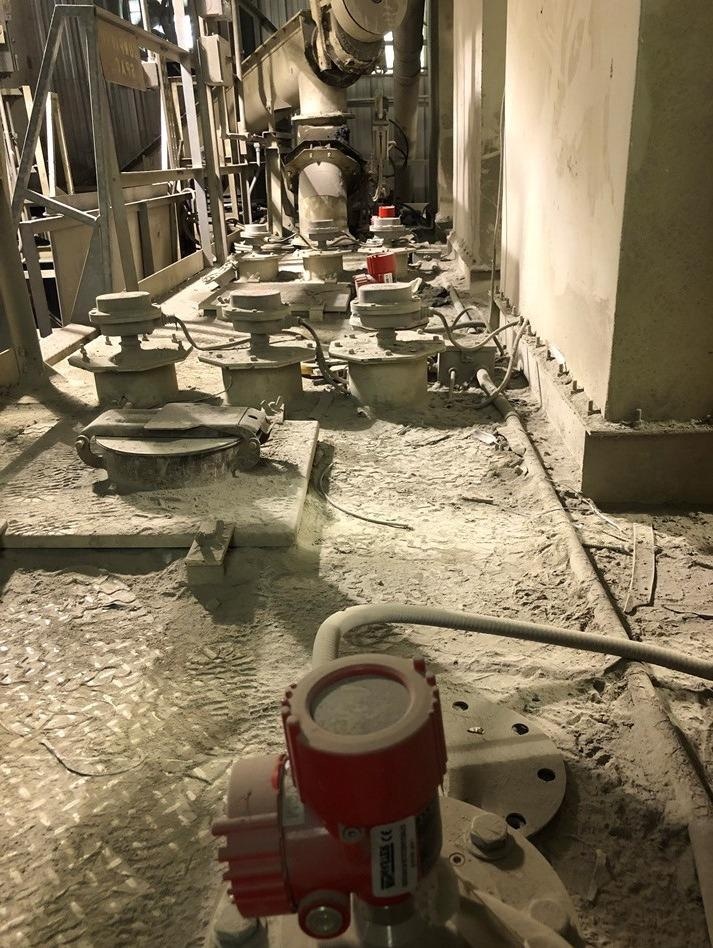
Multiple sensors can be networked using a daisy-chain wiring schematic to reduce wiring costs. Image Credit: BinMaster
The wiring of level sensors in a daisy chain wiring schematic means that only a single gateway is required to send data from the sensors to the software.
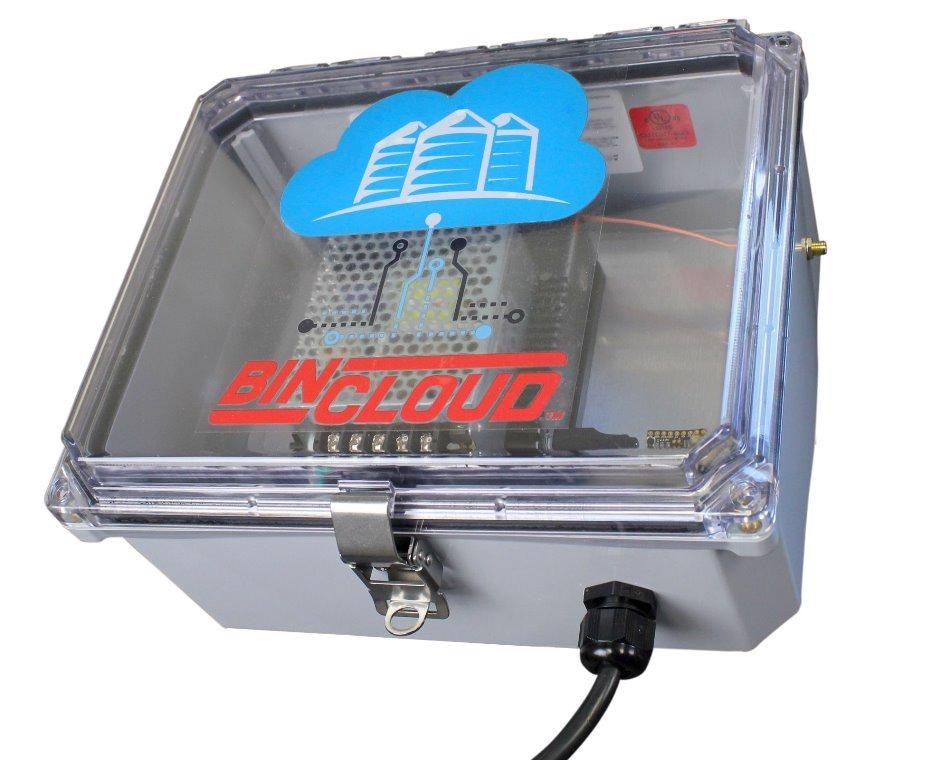
A single gateway does the job of a wireless access point, modem, and router. Image Credit: BinMaster
Wireless bridges and gateways are extremely reliable in terms of data transfer. They are also durable and robust, ideal for use in outdoor environments. The cost of these devices has also reduced significantly in recent years, finally making a connected plant affordable for most organizations.
The technology employed in level sensors and inventory management software applications is rapidly changing for the better. An inventory management system will rapidly provide a return on investment, resulting in process improvements that lead to reduced downtime and enhanced productivity without the need for extra staff.
Now is an ideal time to integrate a new sensor solution into any ongoing 2021 development plans.

This information has been sourced, reviewed, and adapted from materials provided by BinMaster.
For more information on this source, please visit BinMaster.